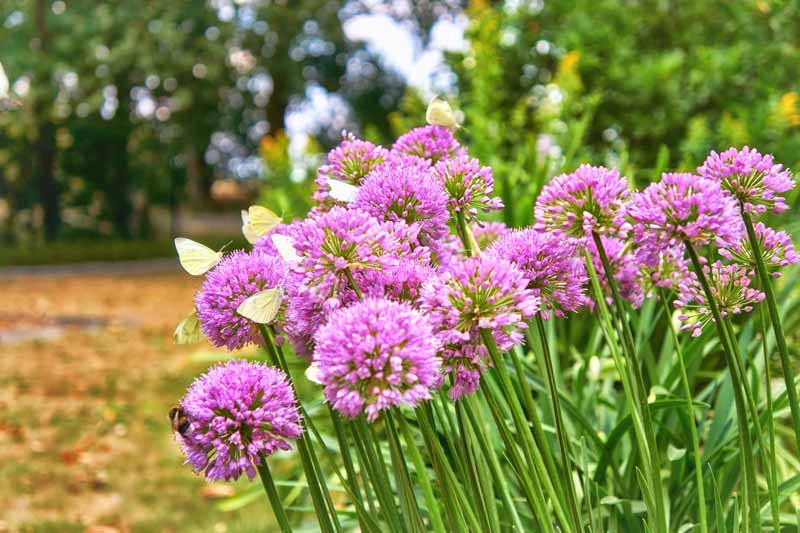Seasonal Agapanthus Treatment: Planning For Winter Months and Summer season
Wiki Article
Understanding the Art of Agapanthus Care: Crucial Steps for Healthy And Balanced Growth and Lively Blossoms
In the world of gardening, the growing of agapanthus stands as a rewarding endeavor for those that look for to nurture these classy blooming plants. With their striking flowers and elegant vegetation, agapanthus has captured the interest of gardeners worldwide. However, attaining optimum development and vivid blooms calls for a nuanced approach that encompasses numerous important steps. From picking the right variety to understanding trimming methods, the trip towards growing thriving agapanthus plants is multifaceted and holds the crucial to opening the full potential of these agricultural treasures.
Selecting the Right Agapanthus Range

When picking the best Agapanthus range for your yard, think about variables such as environment viability, blossom color, and development routine. Agapanthus, commonly referred to as Lily of the Nile or African lily, comes in a range of colors varying from shades of blue and purple to white. Pick a blossom color that matches your existing yard palette to create an unified landscape. Furthermore, take into consideration the environment in your area to make sure the Agapanthus selection you select can grow in your certain problems. Some varieties are more forgiving of cool temperature levels, while others choose warmer climates. Recognizing the development routine of different Agapanthus selections is critical for correct positioning within your garden. Some ranges have a clumping growth habit, perfect for borders or containers, while others have a more dispersing nature, ideal for ground cover or mass plantings. By thoroughly examining these variables, you can pick the best Agapanthus selection to improve the charm of your yard.
Perfect Planting Problems
Thinking about the optimum environmental requirements is vital for successful Agapanthus growing. Agapanthus prospers in well-draining soil with a slightly acidic to neutral pH degree. When growing, choose a place that gets full sunlight to partial shade. In hotter environments, giving some mid-day shade can prevent scorching of the fallen leaves. Agapanthus plants are delicate to chilly temperature levels and must be protected from frost during cold weather.To make certain healthy and balanced growth and lively blooms, plant Agapanthus light bulbs at a deepness of concerning 2-4 inches and room them 8-12 inches apart. Mulching around the base of the plants helps maintain dampness and reduces weed development.
Watering and Feeding Tips
Preserving appropriate dampness levels and offering crucial nutrients are crucial elements in the treatment regimen for Agapanthus plants. When it comes to watering Agapanthus, it is important to strike a balance. If overwatered, these plants choose consistently moist dirt but are susceptible to root rot. Throughout the growing season, water deeply as soon as a week, ensuring the dirt is well-draining to prevent waterlogging. In hotter environments or throughout periods of drought, even more frequent watering might be needed to keep the dirt evenly damp. Nonetheless, decrease watering in the wintertime to avoid waterlogged conditions.Feeding Agapanthus is necessary for promoting see page healthy development and prolific flowers. Apply a balanced fertilizer, such as a 10-10-10 formula, in the very early spring as brand-new growth emerges. By adhering to these watering and feeding ideas, you can ensure your Agapanthus plants flourish and produce lively, durable flowers.
Pruning Strategies for Agapanthus
Trimming Agapanthus plants at the proper times and with appropriate techniques is vital for maintaining their health and wellness and promoting ideal Look At This growth and flowering. The perfect time to trim Agapanthus is in late winter season or early springtime prior to new try this out growth emerges.For flowered stems, wait up until the flowers have withered and after that trim them back to the base. This not just cleans up the plant's look yet additionally motivates the growth of brand-new flower buds. Deadheading spent blossoms can also reroute the plant's energy right into generating more blooms instead than establishing seeds. However, if you intend to collect seeds for proliferation, leave some blossoms to completely dry and mature on the plant.
Keep in mind to make use of clean, sharp tools to make specific cuts and reduce the risk of presenting diseases. Agapanthus. Regular pruning will assist maintain your Agapanthus looking neat and healthy and balanced while making certain an abundant display screen of stunning blossoms
Managing Typical Insects and Conditions
After making sure appropriate pruning methods for Agapanthus, it is crucial to address typical insects and conditions that can influence the wellness and vigor of these plants. One common parasite that influences Agapanthus is the Agapanthus gall midget.Additionally, Agapanthus plants can experience from root rot if they are grown in improperly draining soil. By being watchful and taking prompt action against parasites and conditions, you can assist your Agapanthus plants prosper and create lively flowers. Agapanthus.
:max_bytes(150000):strip_icc()/agapanthus-growing-guide-7368912_04-66a3f4cf245b4332b28954dd37c784f5.jpg)
Final Thought
Finally, understanding the art of agapanthus treatment entails picking the best variety, giving optimal growing conditions, correct watering and fertilizing, suitable pruning strategies, and resolving common insects and diseases. By following these crucial actions, you can guarantee healthy development and lively blossoms for your agapanthus plants. Remember to routinely monitor and keep your plants to promote their total well-being and long life.To guarantee healthy development and lively flowers, plant Agapanthus bulbs at a deepness of regarding 2-4 inches and room them 8-12 inches apart. By complying with these watering and feeding suggestions, you can guarantee your Agapanthus plants thrive and generate dynamic, resilient flowers.
One common pest that influences Agapanthus is the Agapanthus gall midget. In addition, Agapanthus plants can endure from origin rot if they are planted in poorly draining pipes soil. By complying with these essential actions, you can guarantee healthy development and vivid blossoms for your agapanthus plants.
Report this wiki page